Assignment: Make a “Canadian Timeline” Be sure all

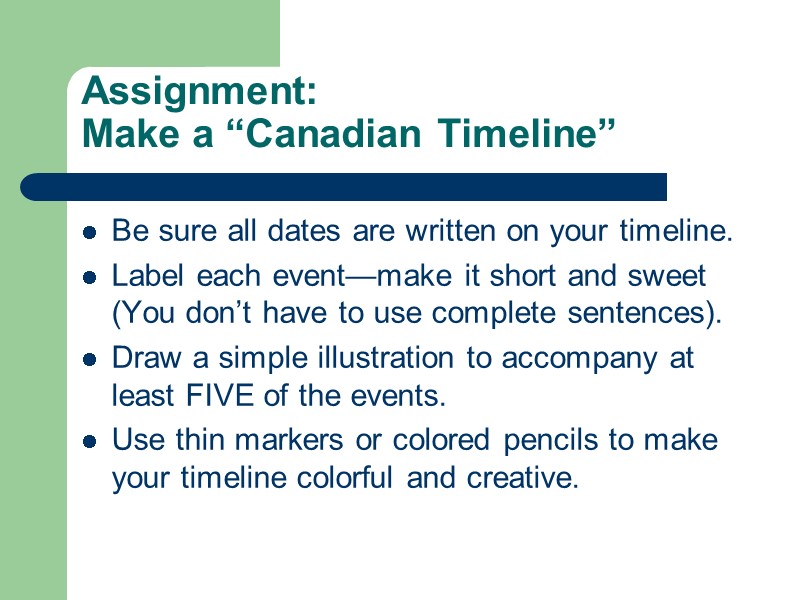
Assignment: Make a “Canadian Timeline” Be sure all dates are written on your timeline. Label each event—make it short and sweet (You don’t have to use complete sentences). Draw a simple illustration to accompany at least FIVE of the events. Use thin markers or colored pencils to make your timeline colorful and creative.

-OR- Make a Canadian Historical Marker Have you ever seen a sign that marks a significant event in history? We have them all over our country, and now you get to create a marker that could be used in Canada! Review your “History of Canada” PowerPoint notes. Which event do you think is the most important event in Canada’s history? You are going to be creating a marker that will tell tourists about the significance of that event.
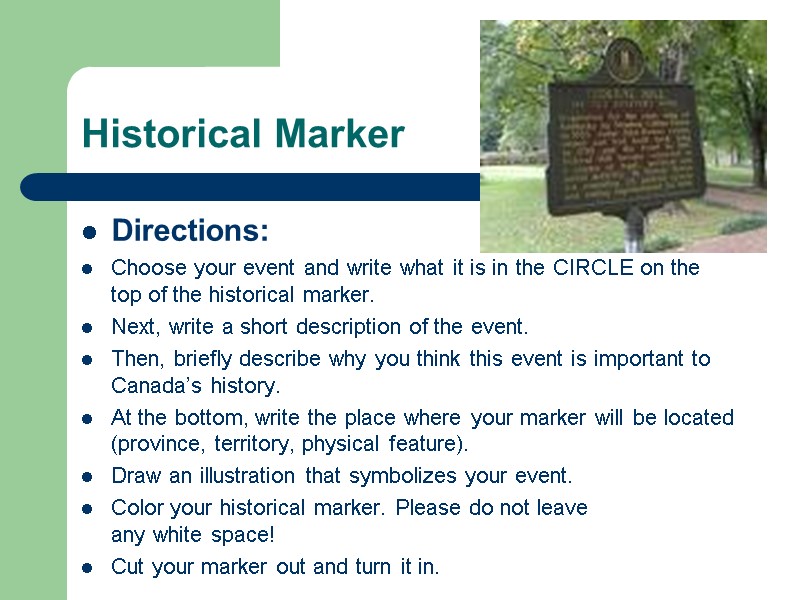
Historical Marker Directions: Choose your event and write what it is in the CIRCLE on the top of the historical marker. Next, write a short description of the event. Then, briefly describe why you think this event is important to Canada’s history. At the bottom, write the place where your marker will be located (province, territory, physical feature). Draw an illustration that symbolizes your event. Color your historical marker. Please do not leave any white space! Cut your marker out and turn it in.
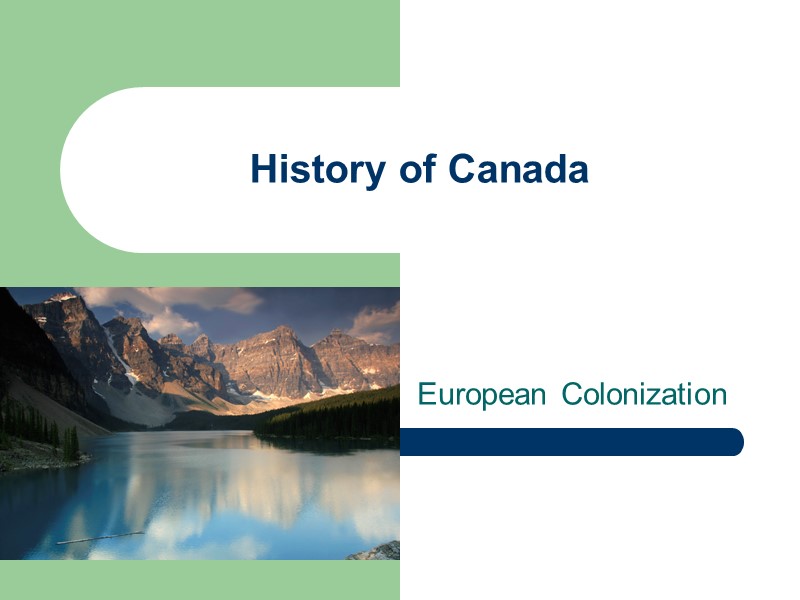
History of Canada European Colonization

The First Nations Native peoples of Canada Came from Asia 12,000 years ago Crossed Bering Land Bridge that joined Russia to Alaska 12 tribes made up the First Nations
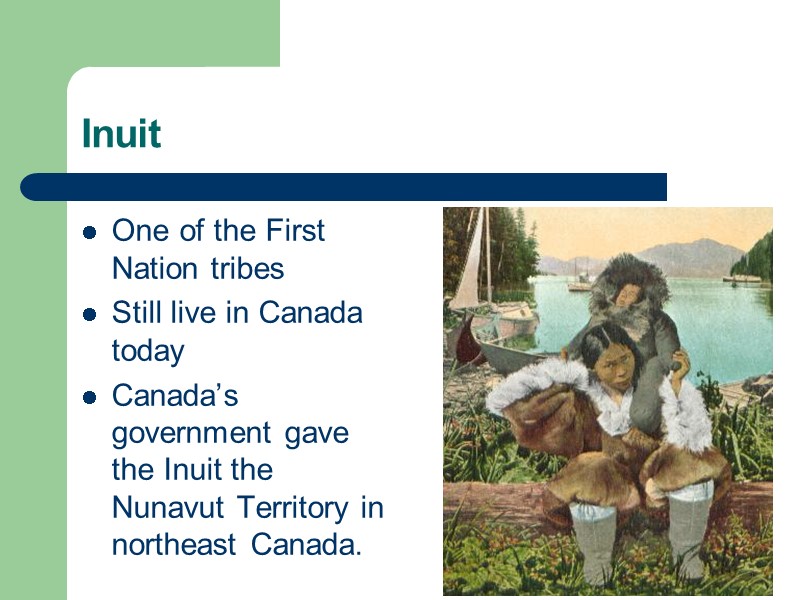
Inuit One of the First Nation tribes Still live in Canada today Canada’s government gave the Inuit the Nunavut Territory in northeast Canada.
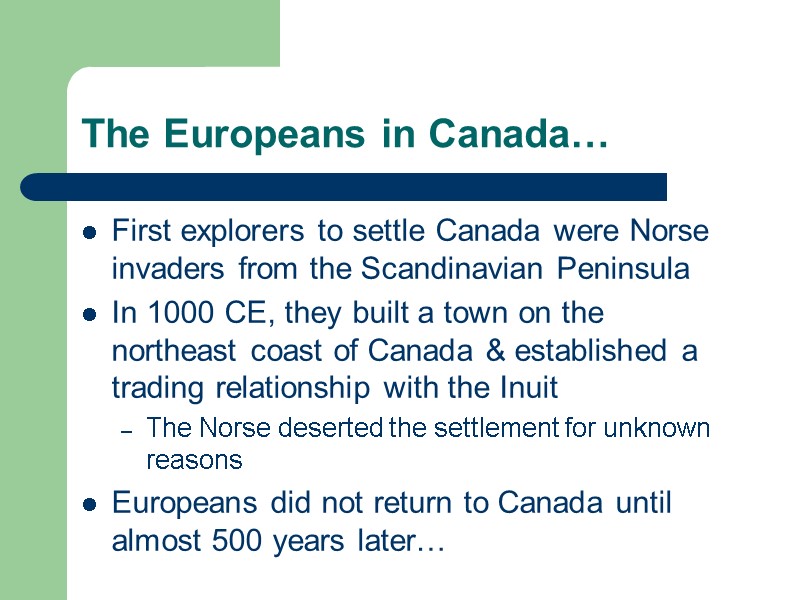
The Europeans in Canada… First explorers to settle Canada were Norse invaders from the Scandinavian Peninsula In 1000 CE, they built a town on the northeast coast of Canada & established a trading relationship with the Inuit The Norse deserted the settlement for unknown reasons Europeans did not return to Canada until almost 500 years later…
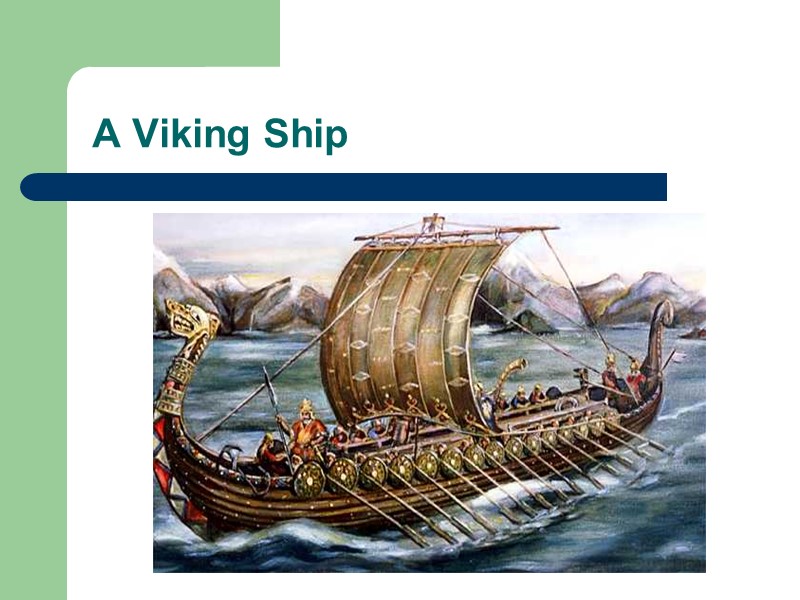
A Viking Ship
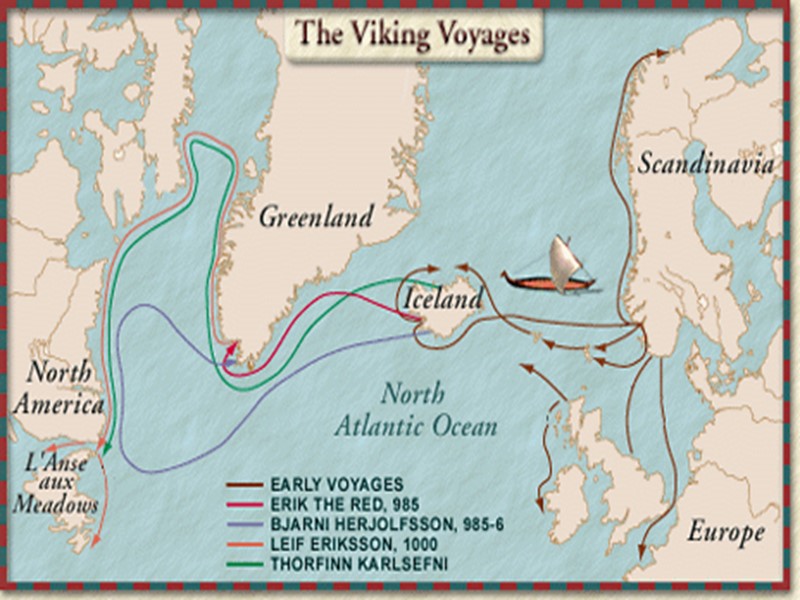

England Claims Newfoundland 1497: Italian explorer John Cabot, sailed to Canada’s east coast Cabot claimed an area of land for England (his sponsor) & named it Newfoundland
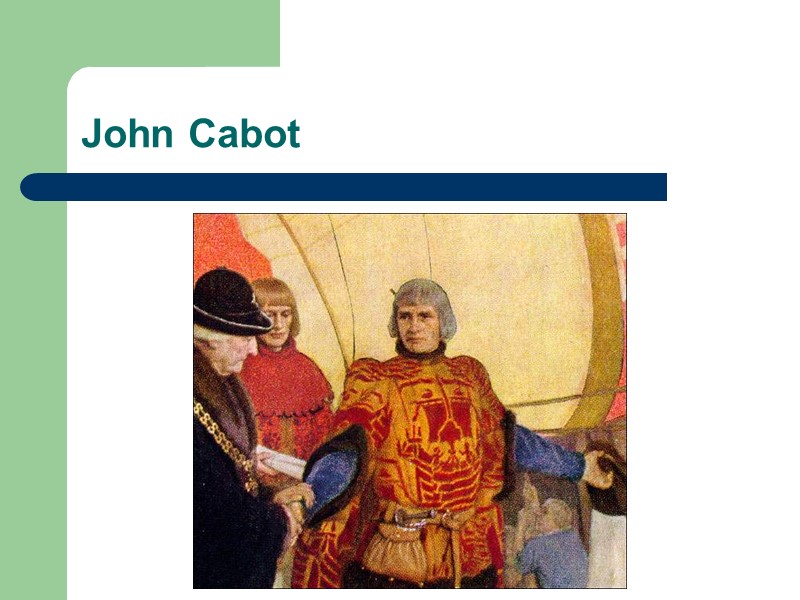
John Cabot
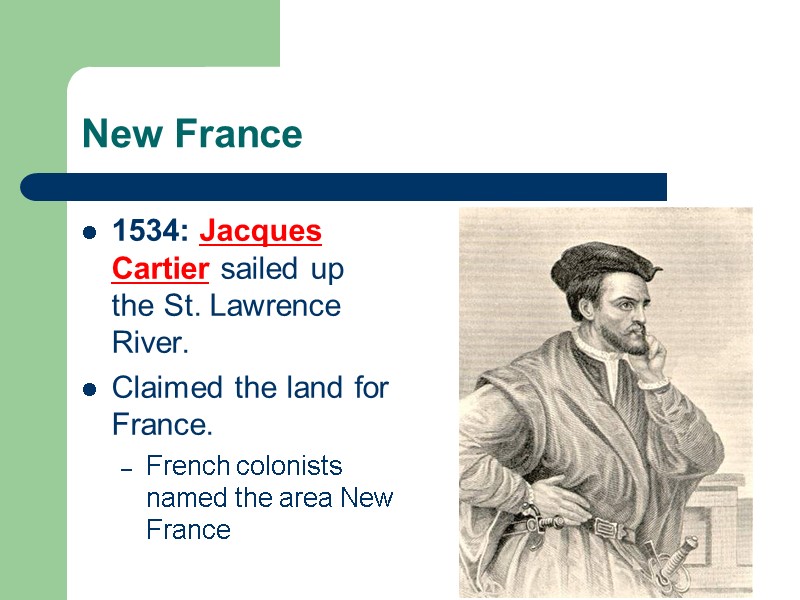
New France 1534: Jacques Cartier sailed up the St. Lawrence River. Claimed the land for France. French colonists named the area New France
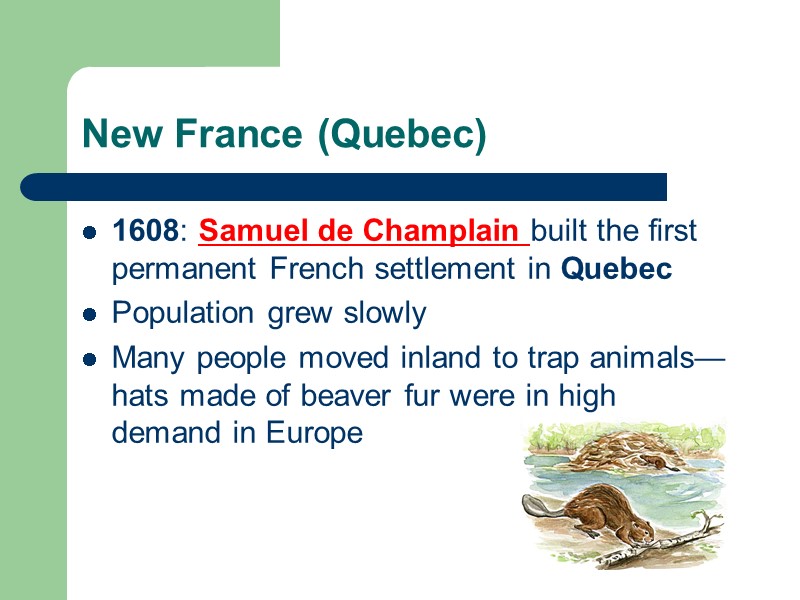
New France (Quebec) 1608: Samuel de Champlain built the first permanent French settlement in Quebec Population grew slowly Many people moved inland to trap animals—hats made of beaver fur were in high demand in Europe

Samuel de Champlain
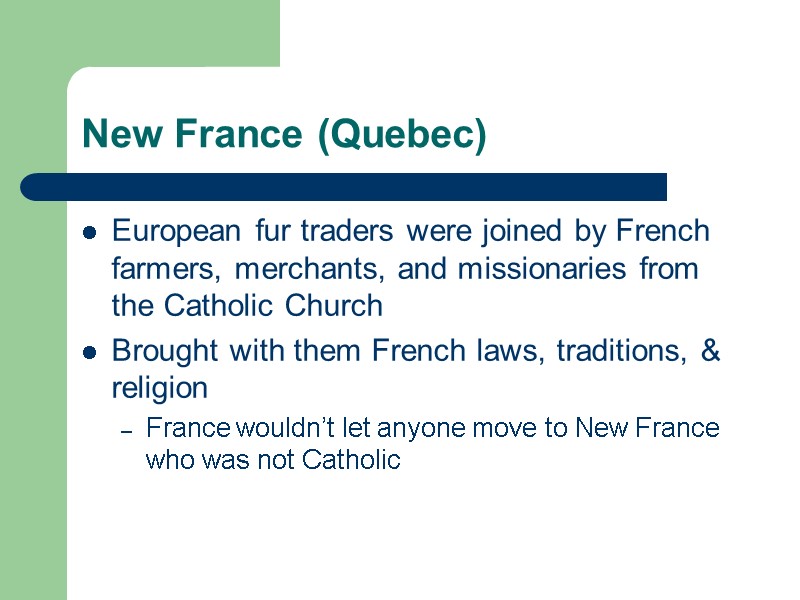
New France (Quebec) European fur traders were joined by French farmers, merchants, and missionaries from the Catholic Church Brought with them French laws, traditions, & religion France wouldn’t let anyone move to New France who was not Catholic
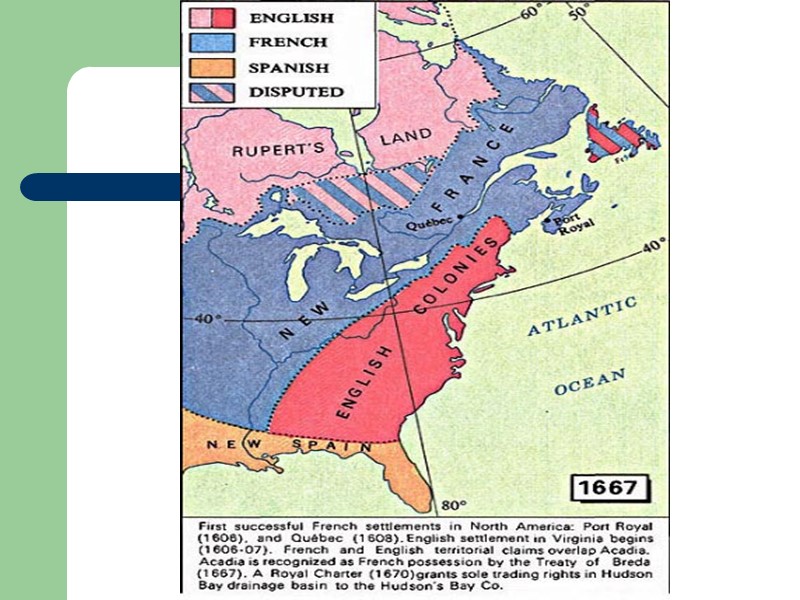
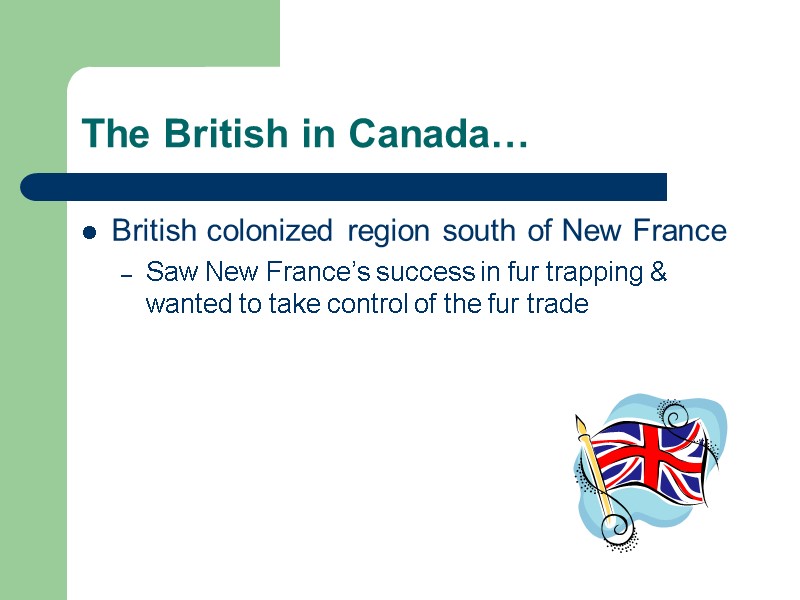
The British in Canada… British colonized region south of New France Saw New France’s success in fur trapping & wanted to take control of the fur trade
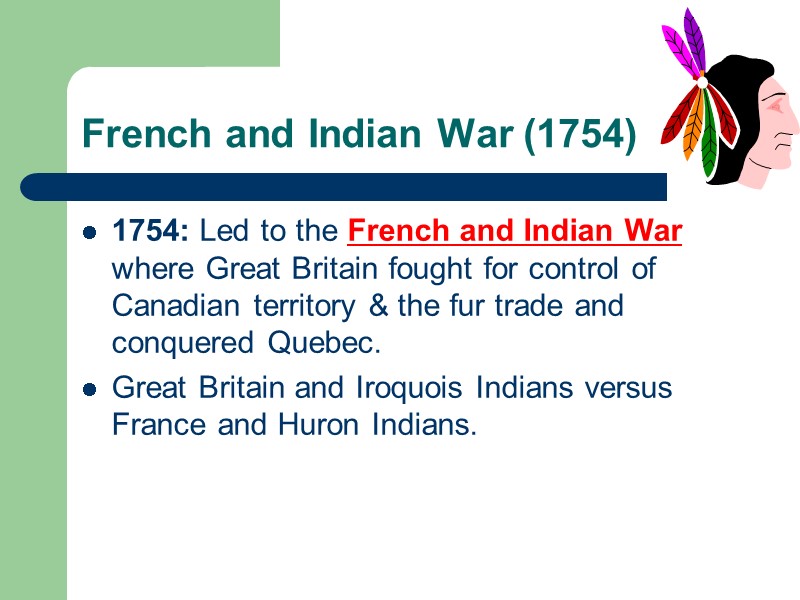
French and Indian War (1754) 1754: Led to the French and Indian War where Great Britain fought for control of Canadian territory & the fur trade and conquered Quebec. Great Britain and Iroquois Indians versus France and Huron Indians.
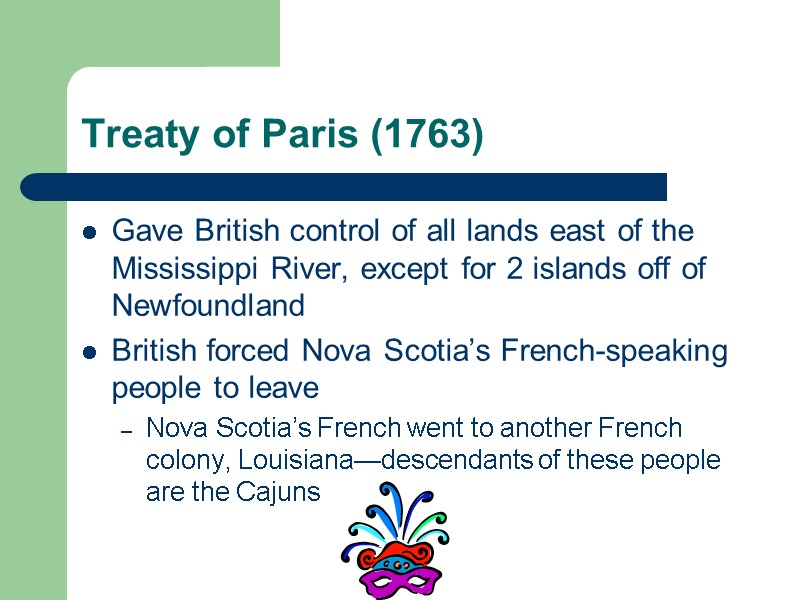
Treaty of Paris (1763) Gave British control of all lands east of the Mississippi River, except for 2 islands off of Newfoundland British forced Nova Scotia’s French-speaking people to leave Nova Scotia’s French went to another French colony, Louisiana—descendants of these people are the Cajuns
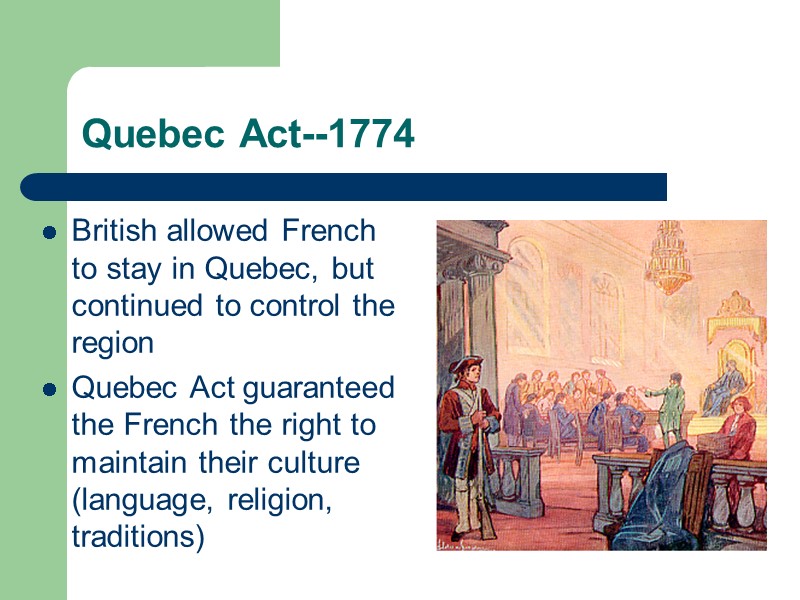
Quebec Act--1774 British allowed French to stay in Quebec, but continued to control the region Quebec Act guaranteed the French the right to maintain their culture (language, religion, traditions)
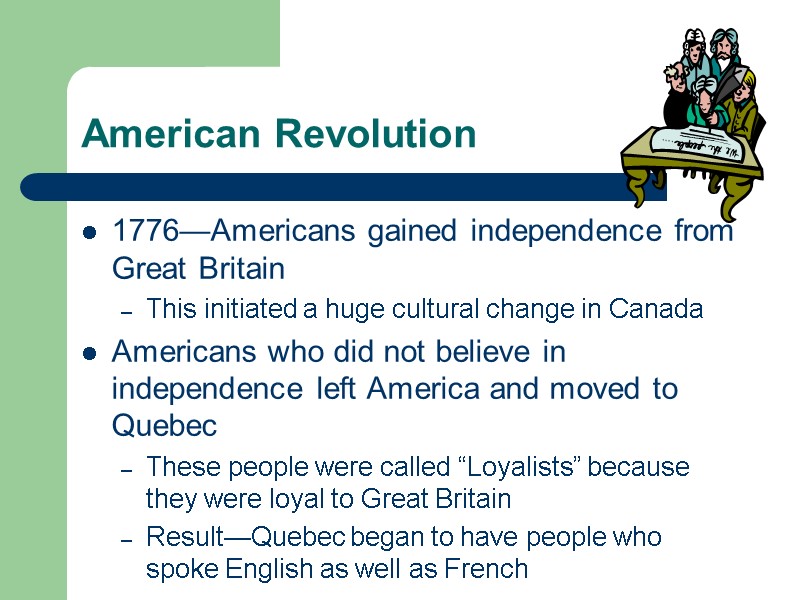
American Revolution 1776—Americans gained independence from Great Britain This initiated a huge cultural change in Canada Americans who did not believe in independence left America and moved to Quebec These people were called “Loyalists” because they were loyal to Great Britain Result—Quebec began to have people who spoke English as well as French
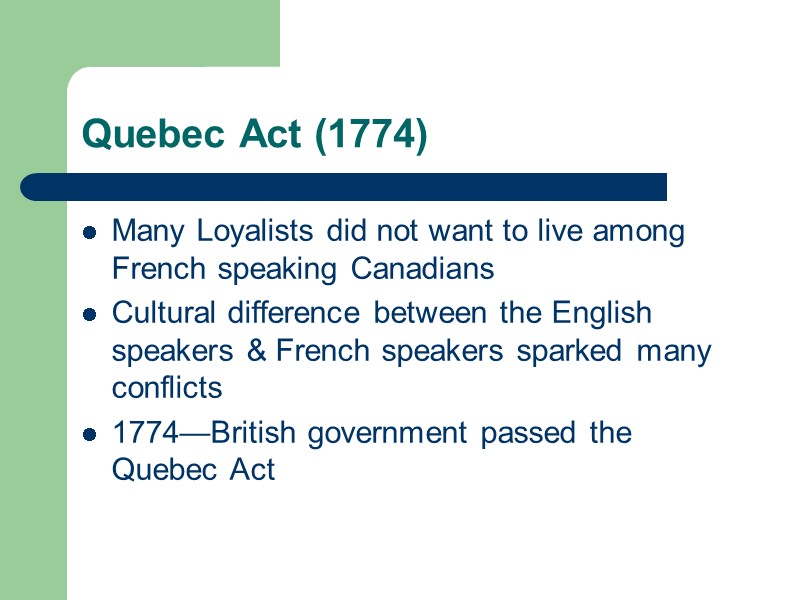
Quebec Act (1774) Many Loyalists did not want to live among French speaking Canadians Cultural difference between the English speakers & French speakers sparked many conflicts 1774—British government passed the Quebec Act
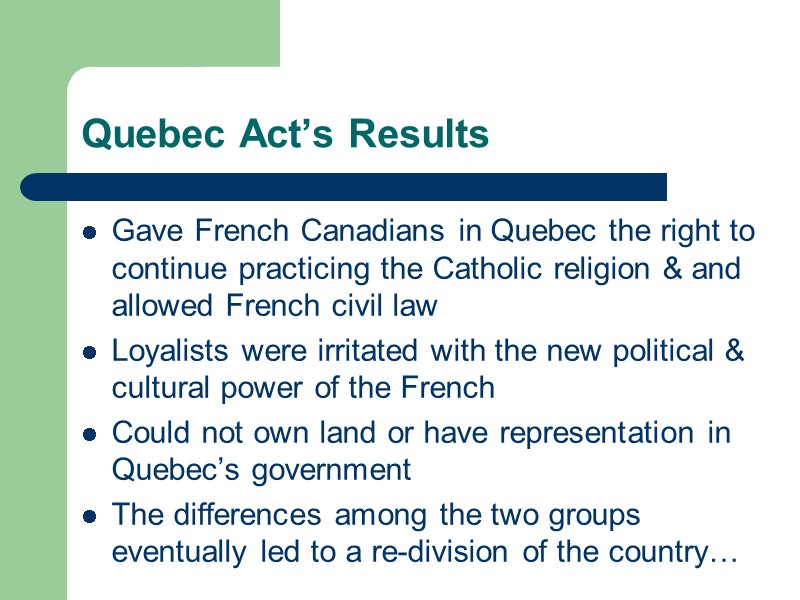
Quebec Act’s Results Gave French Canadians in Quebec the right to continue practicing the Catholic religion & and allowed French civil law Loyalists were irritated with the new political & cultural power of the French Could not own land or have representation in Quebec’s government The differences among the two groups eventually led to a re-division of the country…
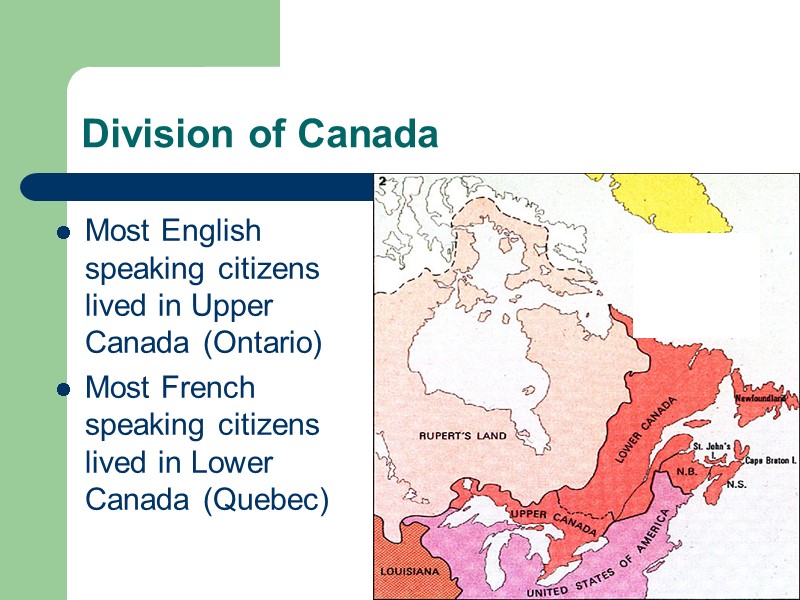
Division of Canada Most English speaking citizens lived in Upper Canada (Ontario) Most French speaking citizens lived in Lower Canada (Quebec) D D D
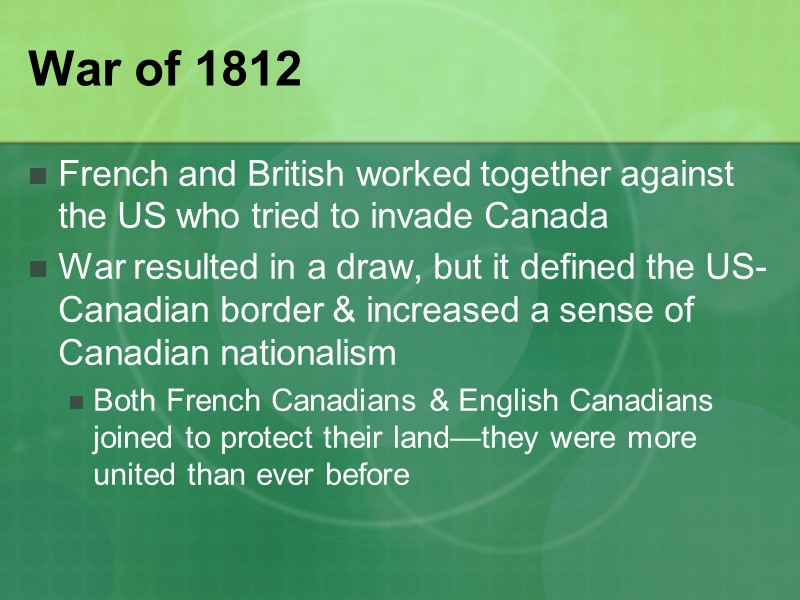
War of 1812 French and British worked together against the US who tried to invade Canada War resulted in a draw, but it defined the US-Canadian border & increased a sense of Canadian nationalism Both French Canadians & English Canadians joined to protect their land—they were more united than ever before

War of 1812
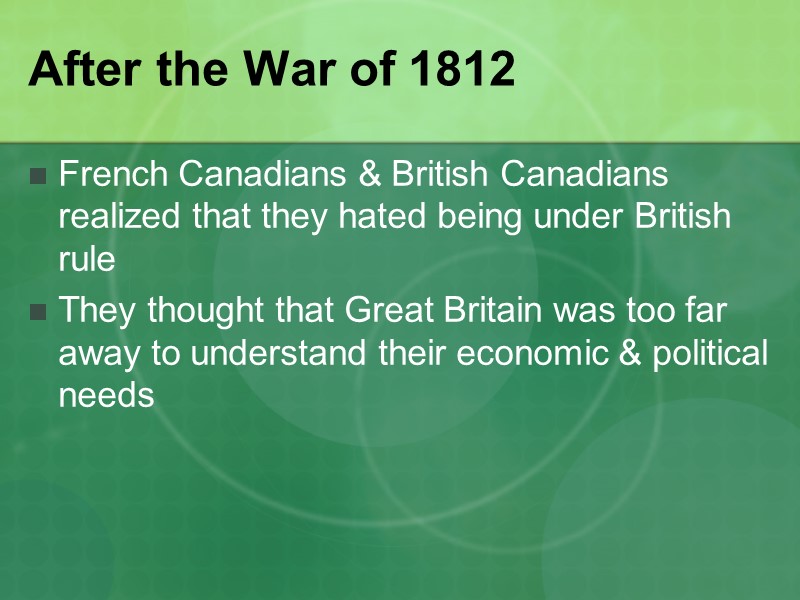
After the War of 1812 French Canadians & British Canadians realized that they hated being under British rule They thought that Great Britain was too far away to understand their economic & political needs
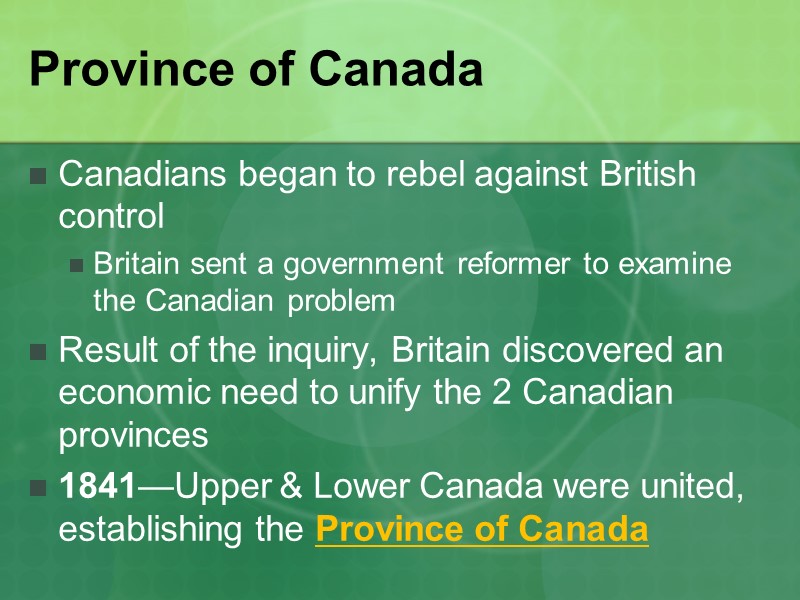
Province of Canada Canadians began to rebel against British control Britain sent a government reformer to examine the Canadian problem Result of the inquiry, Britain discovered an economic need to unify the 2 Canadian provinces 1841—Upper & Lower Canada were united, establishing the Province of Canada
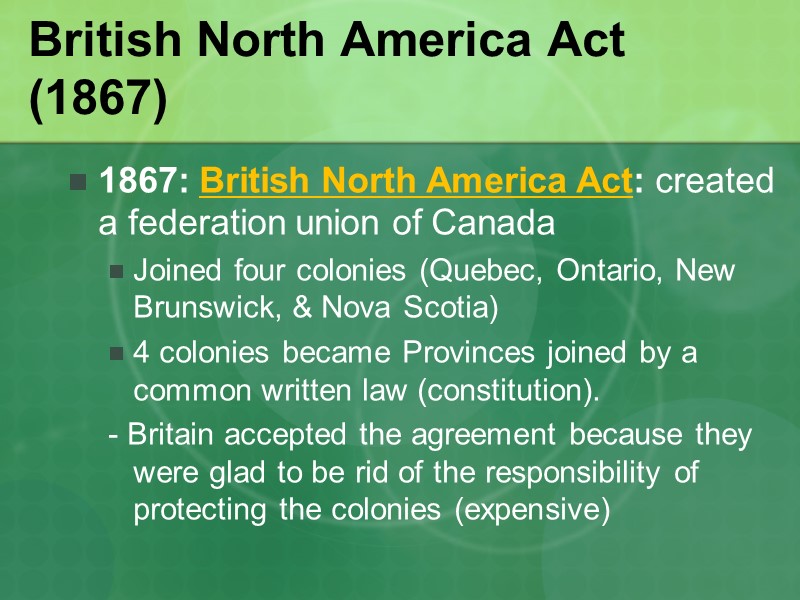
British North America Act (1867) 1867: British North America Act: created a federation union of Canada Joined four colonies (Quebec, Ontario, New Brunswick, & Nova Scotia) 4 colonies became Provinces joined by a common written law (constitution). - Britain accepted the agreement because they were glad to be rid of the responsibility of protecting the colonies (expensive)
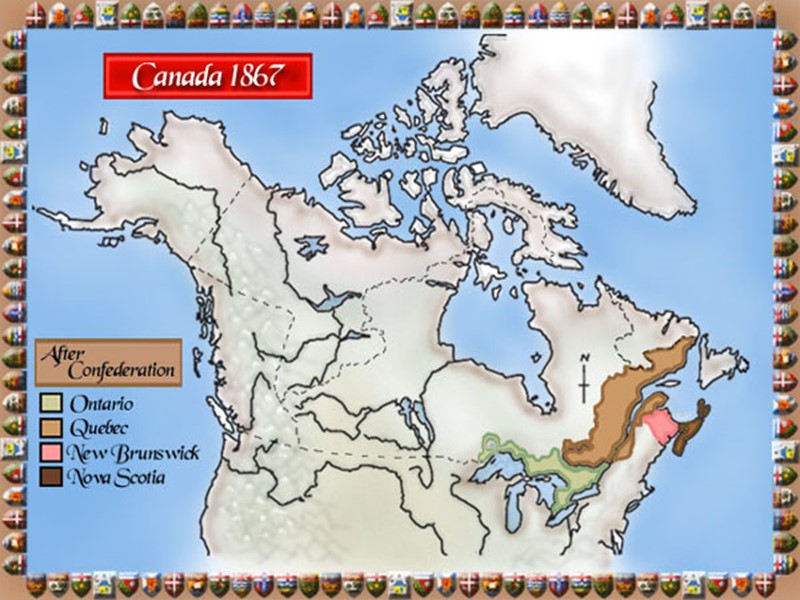
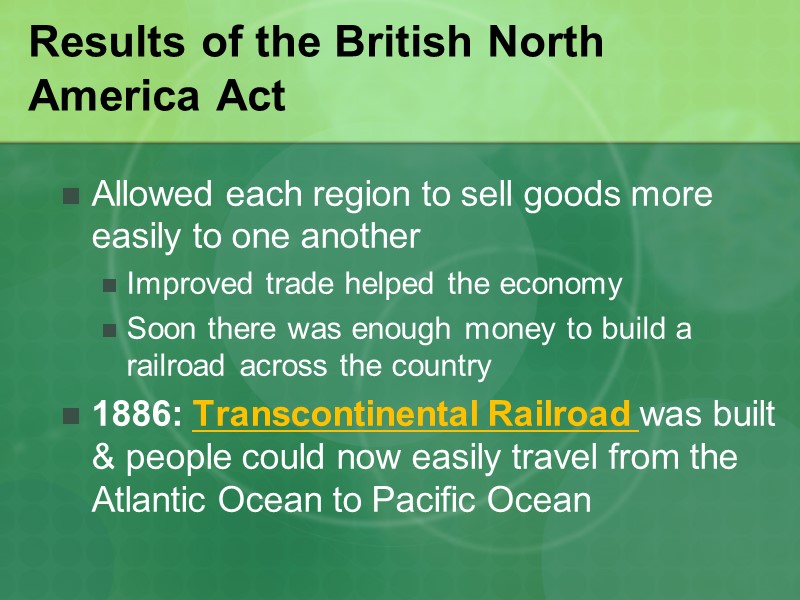
Results of the British North America Act Allowed each region to sell goods more easily to one another Improved trade helped the economy Soon there was enough money to build a railroad across the country 1886: Transcontinental Railroad was built & people could now easily travel from the Atlantic Ocean to Pacific Ocean
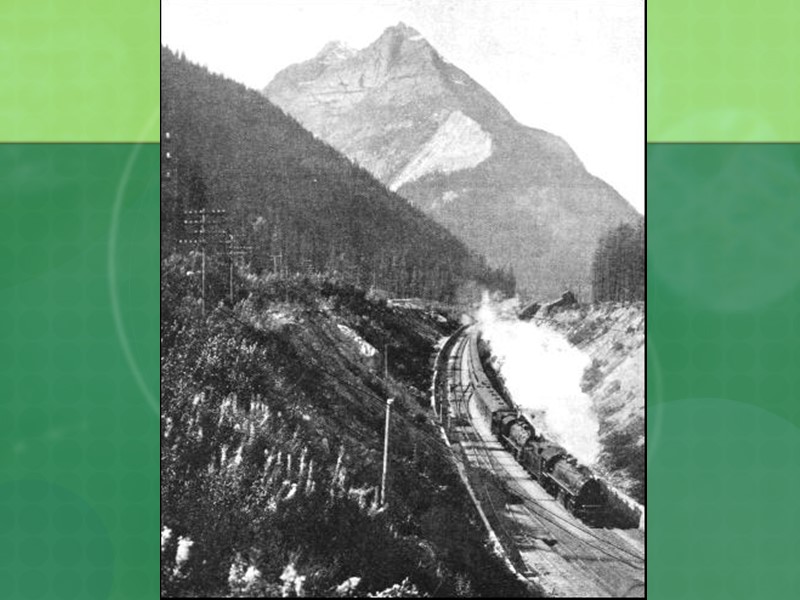
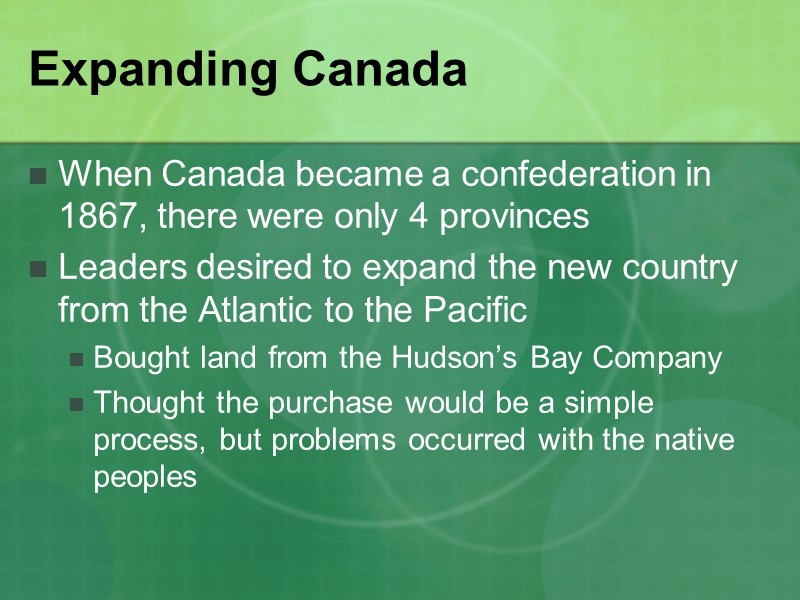
Expanding Canada When Canada became a confederation in 1867, there were only 4 provinces Leaders desired to expand the new country from the Atlantic to the Pacific Bought land from the Hudson’s Bay Company Thought the purchase would be a simple process, but problems occurred with the native peoples
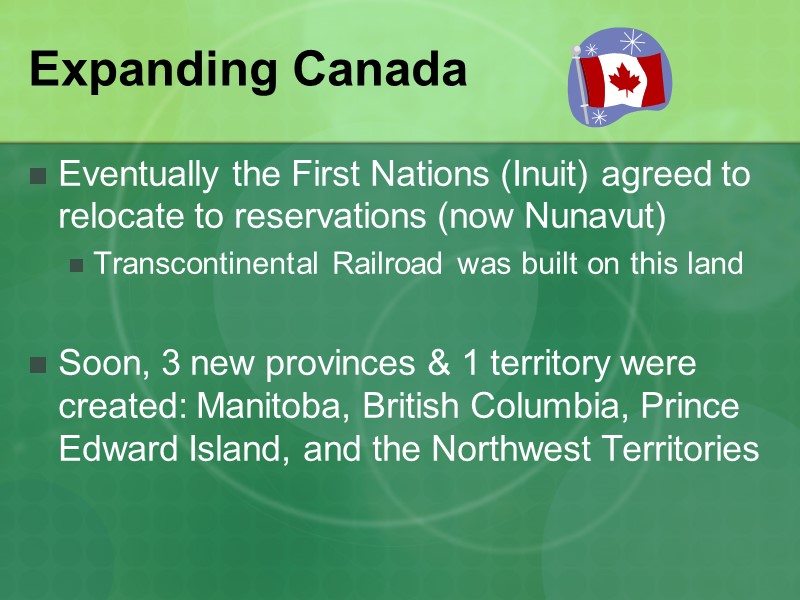
Expanding Canada Eventually the First Nations (Inuit) agreed to relocate to reservations (now Nunavut) Transcontinental Railroad was built on this land Soon, 3 new provinces & 1 territory were created: Manitoba, British Columbia, Prince Edward Island, and the Northwest Territories
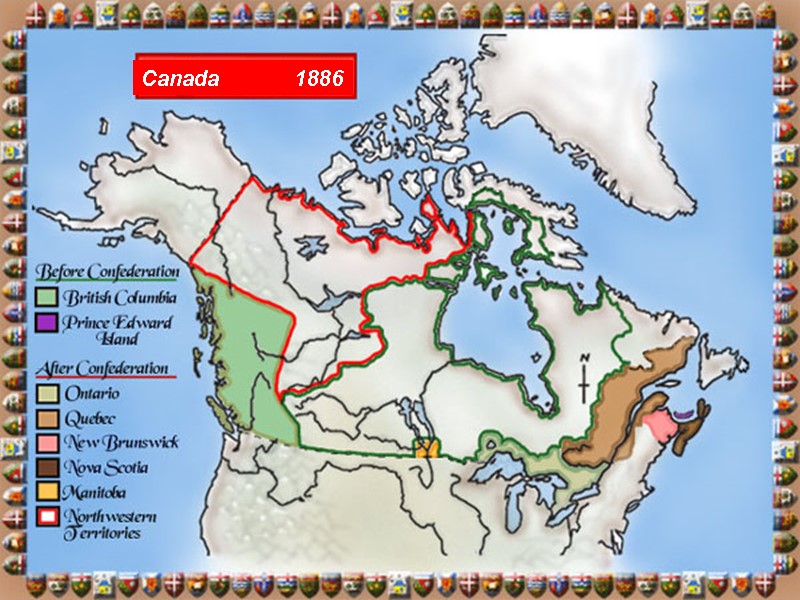
Canada 1886
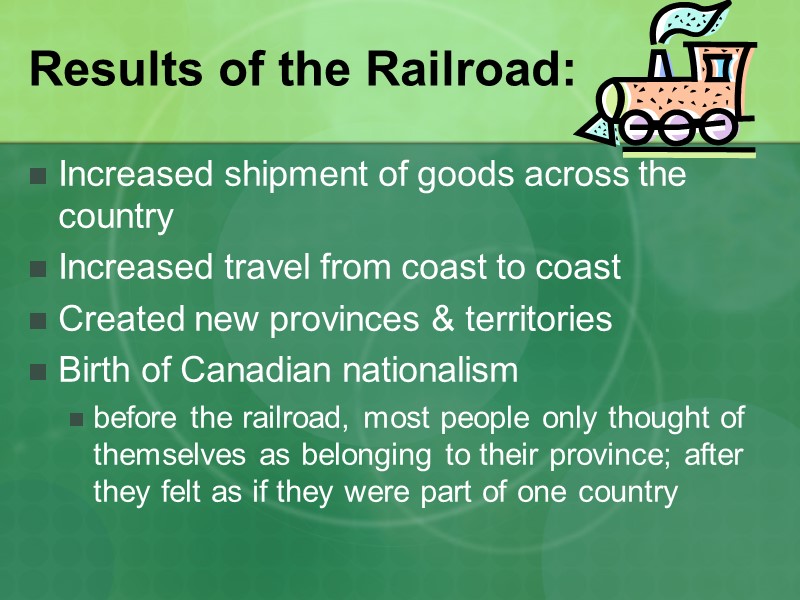
Results of the Railroad: Increased shipment of goods across the country Increased travel from coast to coast Created new provinces & territories Birth of Canadian nationalism before the railroad, most people only thought of themselves as belonging to their province; after they felt as if they were part of one country
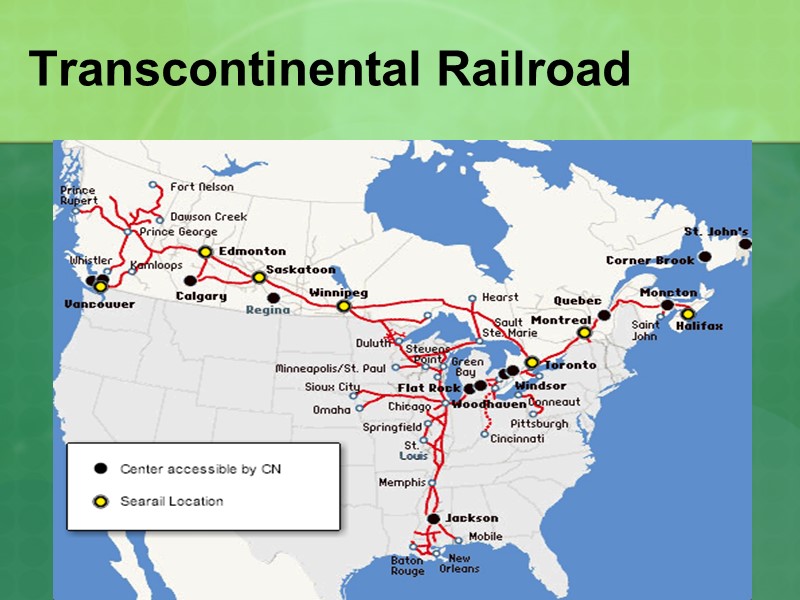
Transcontinental Railroad
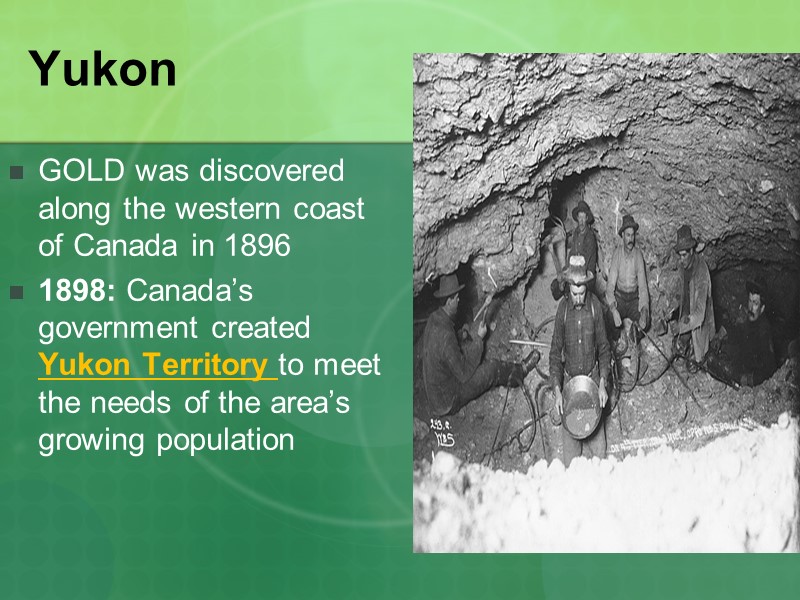
Yukon GOLD was discovered along the western coast of Canada in 1896 1898: Canada’s government created Yukon Territory to meet the needs of the area’s growing population
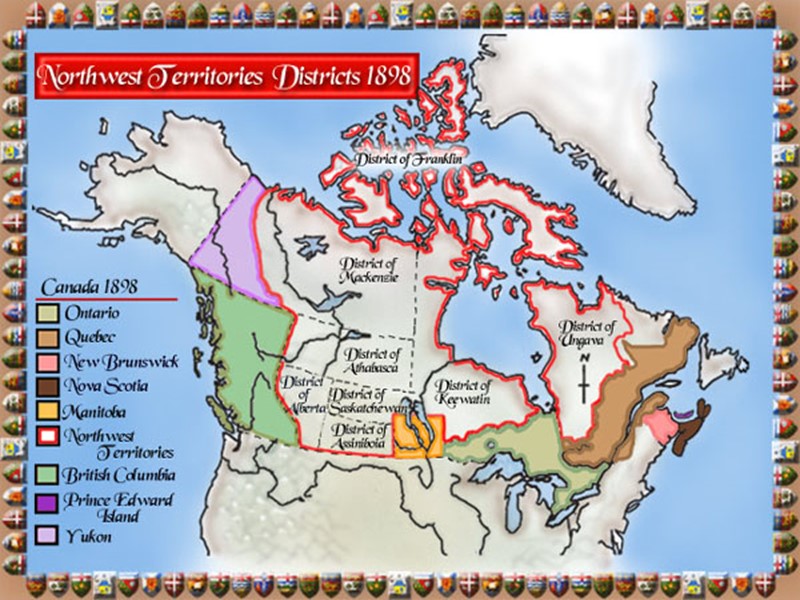
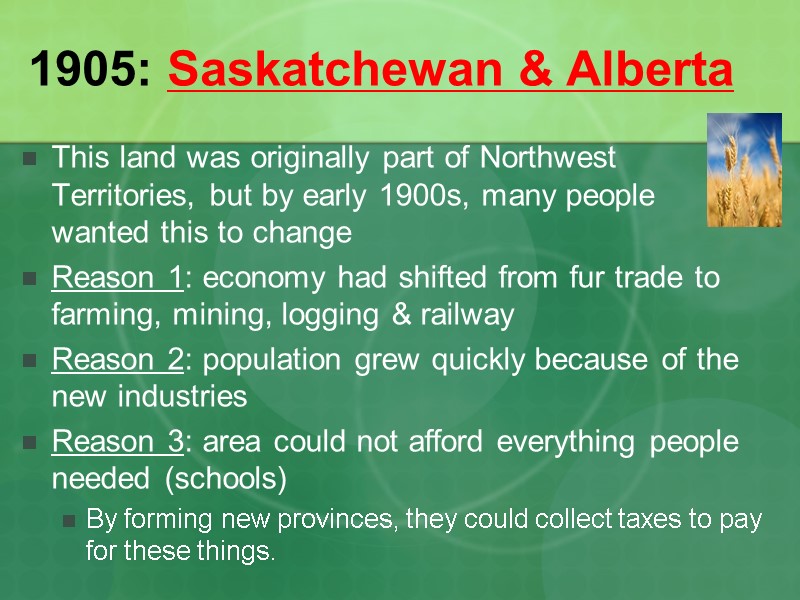
1905: Saskatchewan & Alberta This land was originally part of Northwest Territories, but by early 1900s, many people wanted this to change Reason 1: economy had shifted from fur trade to farming, mining, logging & railway Reason 2: population grew quickly because of the new industries Reason 3: area could not afford everything people needed (schools) By forming new provinces, they could collect taxes to pay for these things.
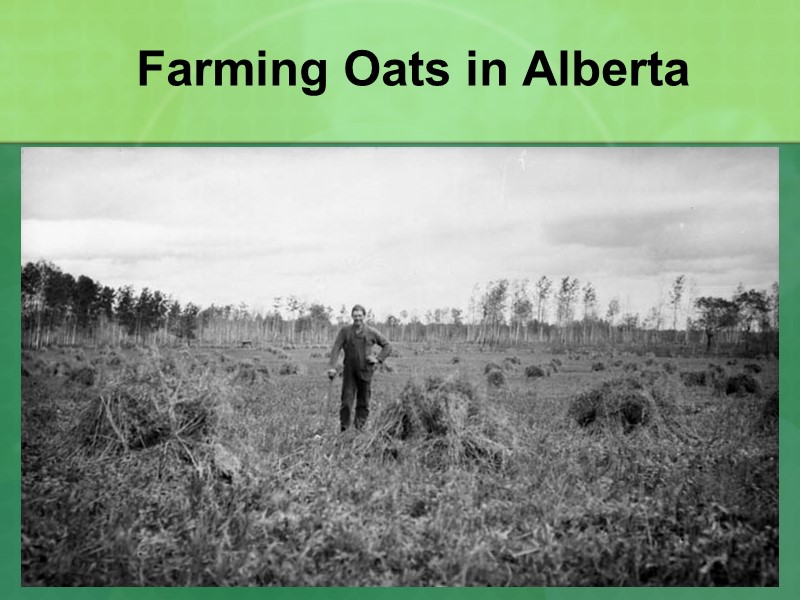
Farming Oats in Alberta
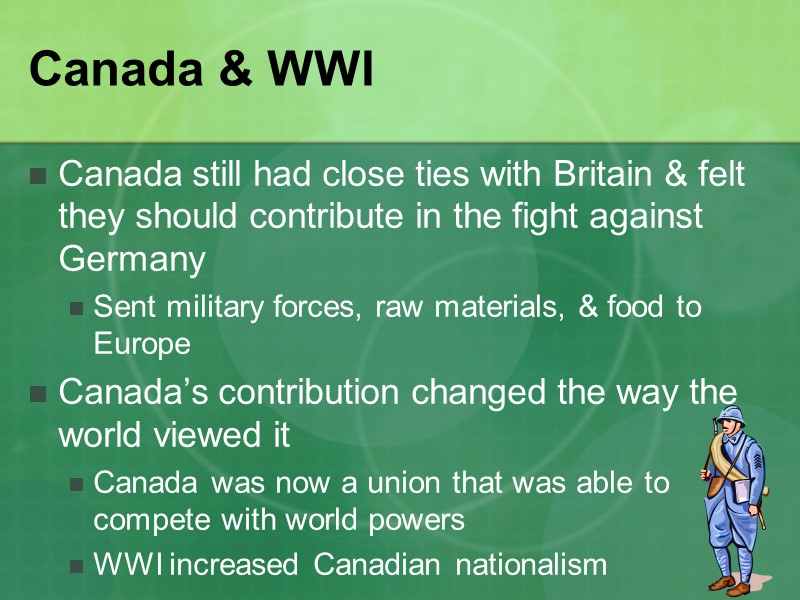
Canada & WWI Canada still had close ties with Britain & felt they should contribute in the fight against Germany Sent military forces, raw materials, & food to Europe Canada’s contribution changed the way the world viewed it Canada was now a union that was able to compete with world powers WWI increased Canadian nationalism
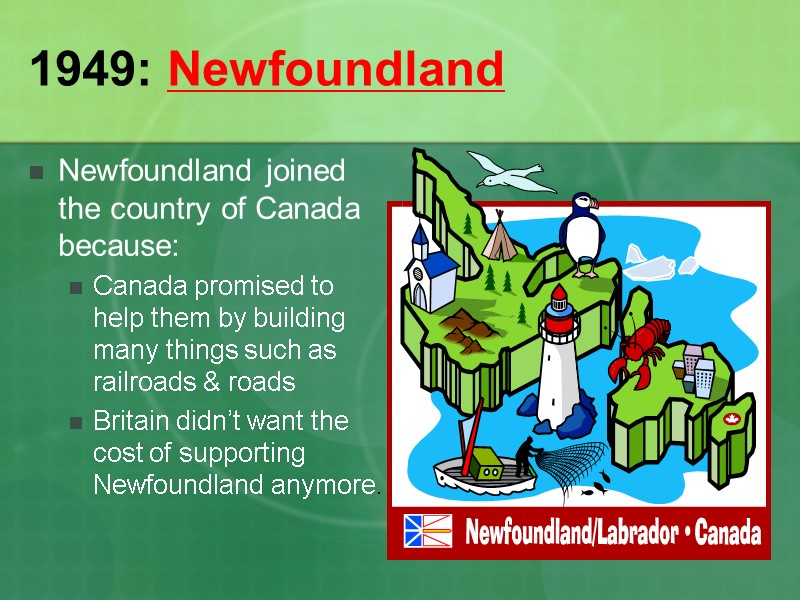
1949: Newfoundland Newfoundland joined the country of Canada because: Canada promised to help them by building many things such as railroads & roads Britain didn’t want the cost of supporting Newfoundland anymore.
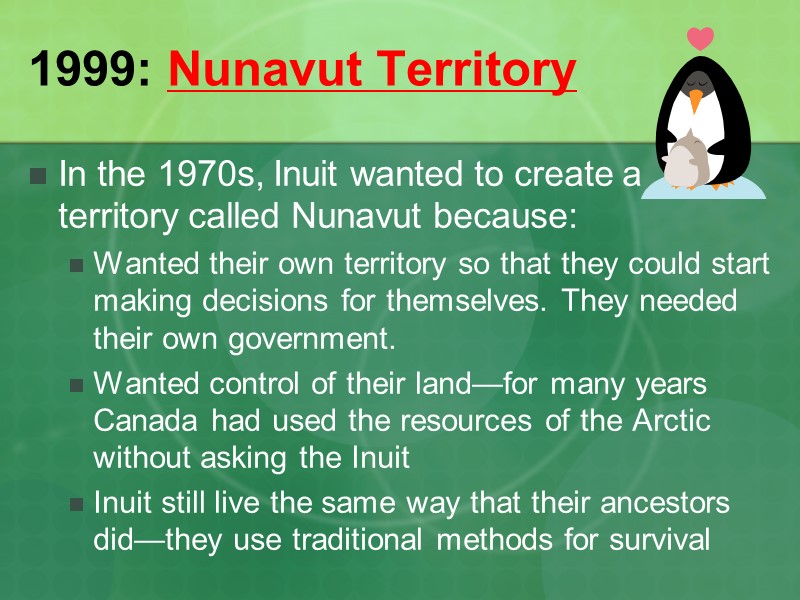
1999: Nunavut Territory In the 1970s, Inuit wanted to create a territory called Nunavut because: Wanted their own territory so that they could start making decisions for themselves. They needed their own government. Wanted control of their land—for many years Canada had used the resources of the Arctic without asking the Inuit Inuit still live the same way that their ancestors did—they use traditional methods for survival
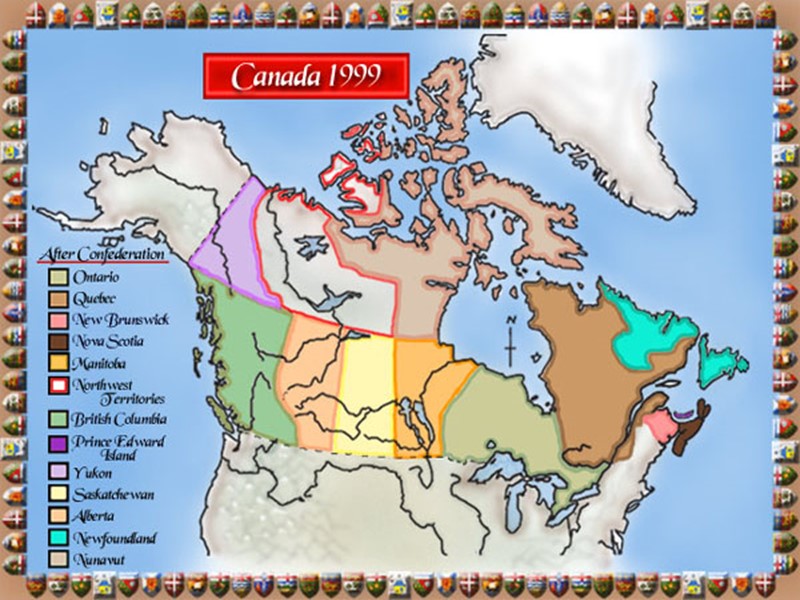
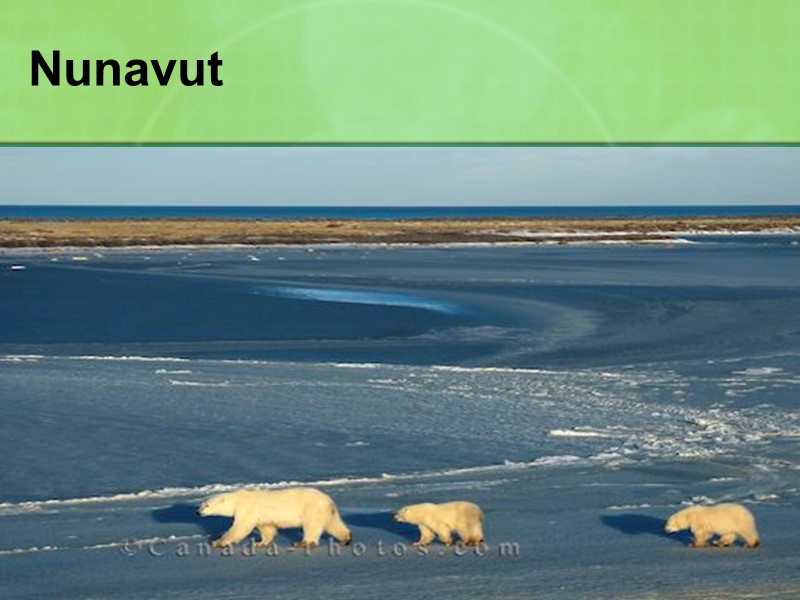
Nunavut
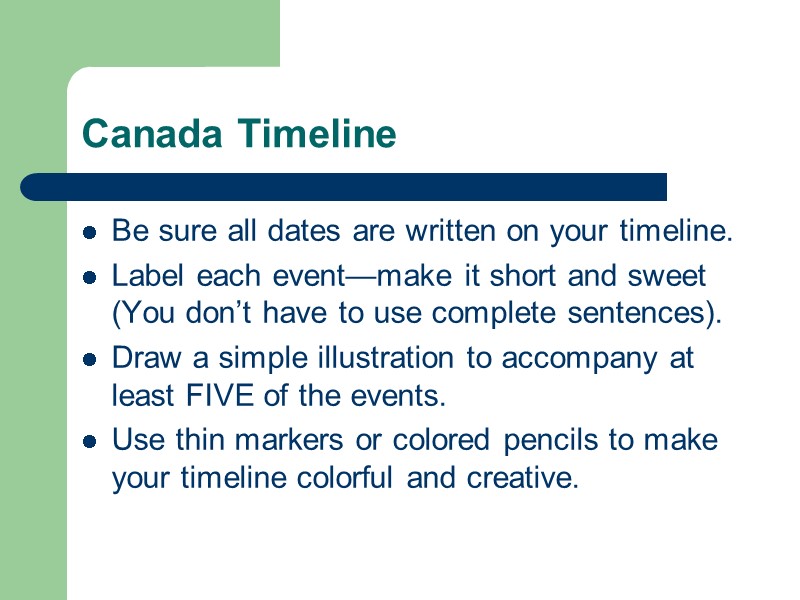
Canada Timeline Be sure all dates are written on your timeline. Label each event—make it short and sweet (You don’t have to use complete sentences). Draw a simple illustration to accompany at least FIVE of the events. Use thin markers or colored pencils to make your timeline colorful and creative.
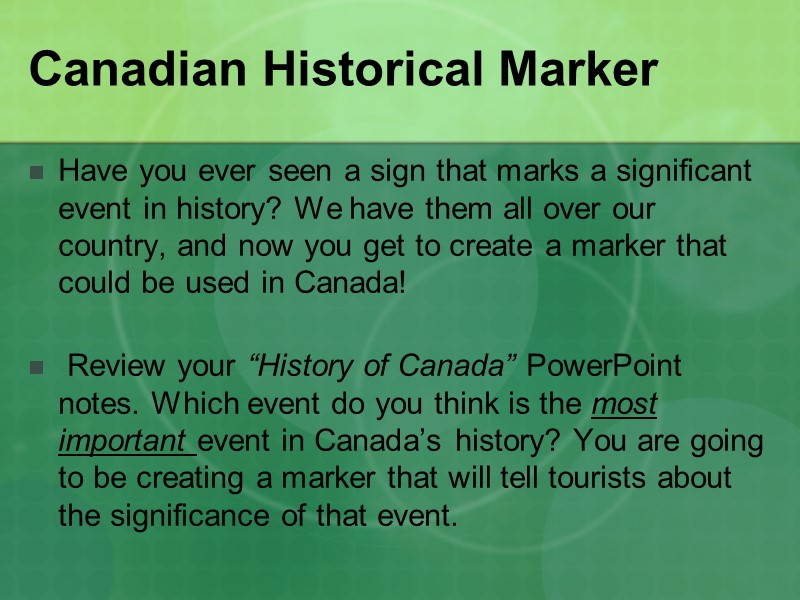
Canadian Historical Marker Have you ever seen a sign that marks a significant event in history? We have them all over our country, and now you get to create a marker that could be used in Canada! Review your “History of Canada” PowerPoint notes. Which event do you think is the most important event in Canada’s history? You are going to be creating a marker that will tell tourists about the significance of that event.
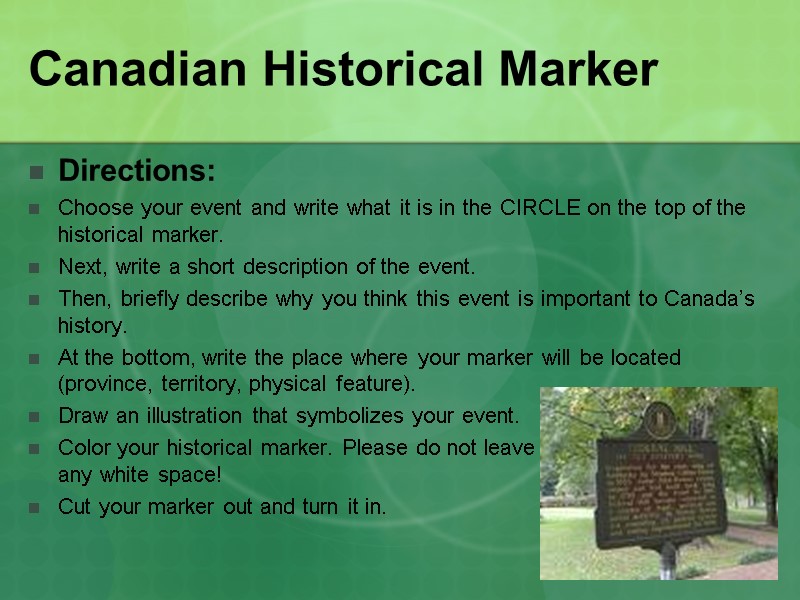
Canadian Historical Marker Directions: Choose your event and write what it is in the CIRCLE on the top of the historical marker. Next, write a short description of the event. Then, briefly describe why you think this event is important to Canada’s history. At the bottom, write the place where your marker will be located (province, territory, physical feature). Draw an illustration that symbolizes your event. Color your historical marker. Please do not leave any white space! Cut your marker out and turn it in.
38232-history_of_canada.ppt
- Количество слайдов: 49

